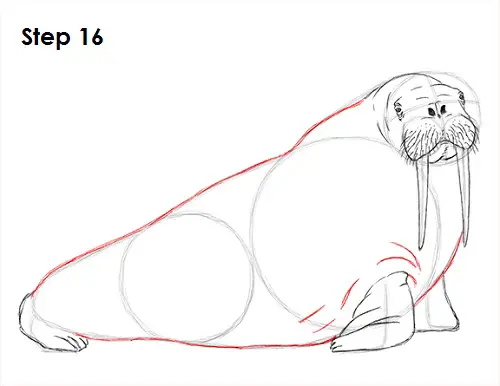
Step 16: Use the remaining lines as guides to draw the rest of the walrus's body. Follow the path of the initial guides as you darken the lines and form the walrus' body. Add a few extra lines around the front flipper for the loose skin above it.

Step 17 (optional): For a cleaner look, erase as much as you can of the initial guide lines. Don't worry about erasing all of the guides. It's okay to leave some behind. Re-draw any final sketch lines that you may have accidentally erased.

Final Step (optional): Add some shading to your walrus drawing to give it more dimension and volume. Pick the direction of the light source when shading so that the shadows are consistent with it. Add the value lightly at first, then gradually build up to the level of darkness that you want. Vary the pressure on your pencil to get different degrees of tonal value. Shading can be very time-consuming, so be patient and take breaks. You can shade different sections of the body at a time to make the process less overwhelming.
Add a cast shadow underneath. This helps ground the walrus so it doesn't appear to be floating.
You can add more value throughout your walrus drawing for more detail. Walruses don't have any pattern on their skins, so just add a single value to the entire body. Walruses also have pretty rough and wrinkly skin, so don't worry about shading too smoothly. It's always a good idea to use reference for a more accurate drawing. Remember to pause the "How to Draw a Walrus" video after each step to draw at your own pace.
Thanks for watching! Subscribe to the How2DrawAnimals YouTube Channel for a new tutorial every Tuesday.
To learn how to draw popular cartoon characters, visit EasyDrawingTutorials.com.







